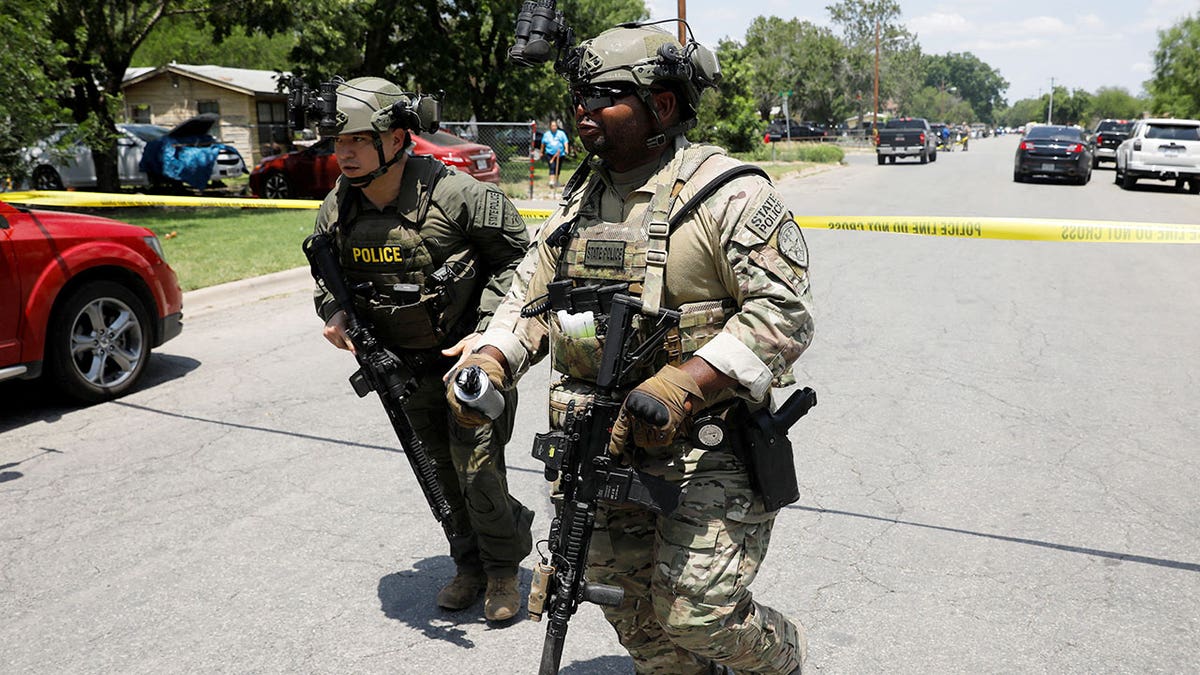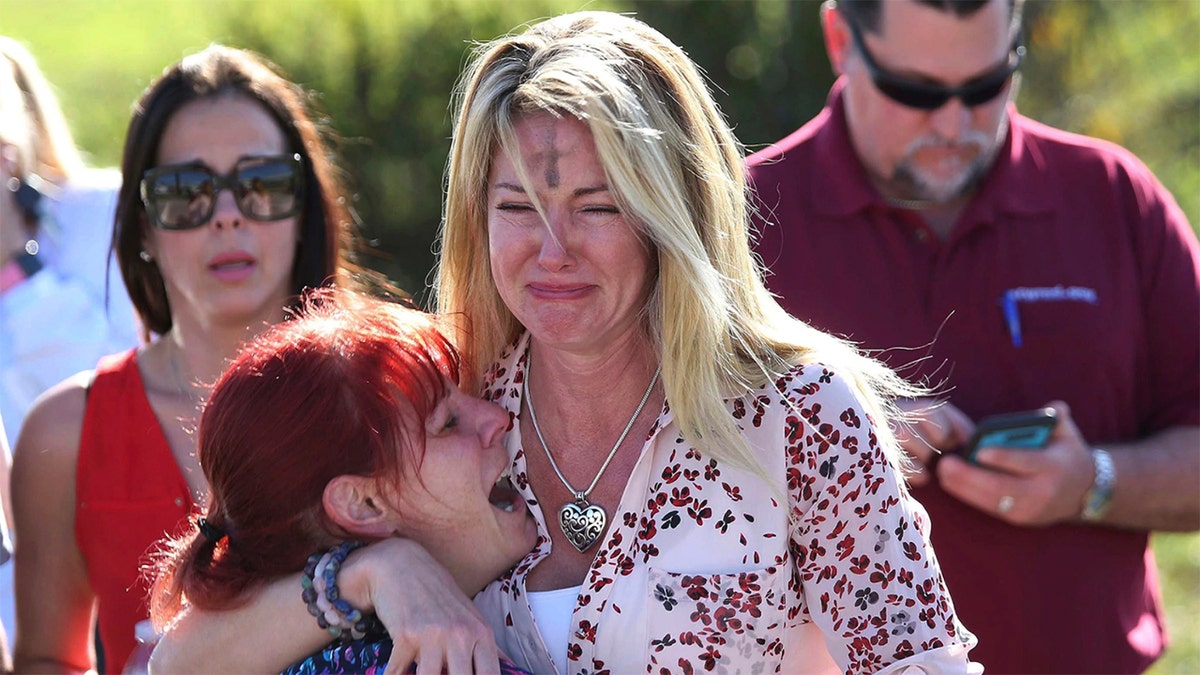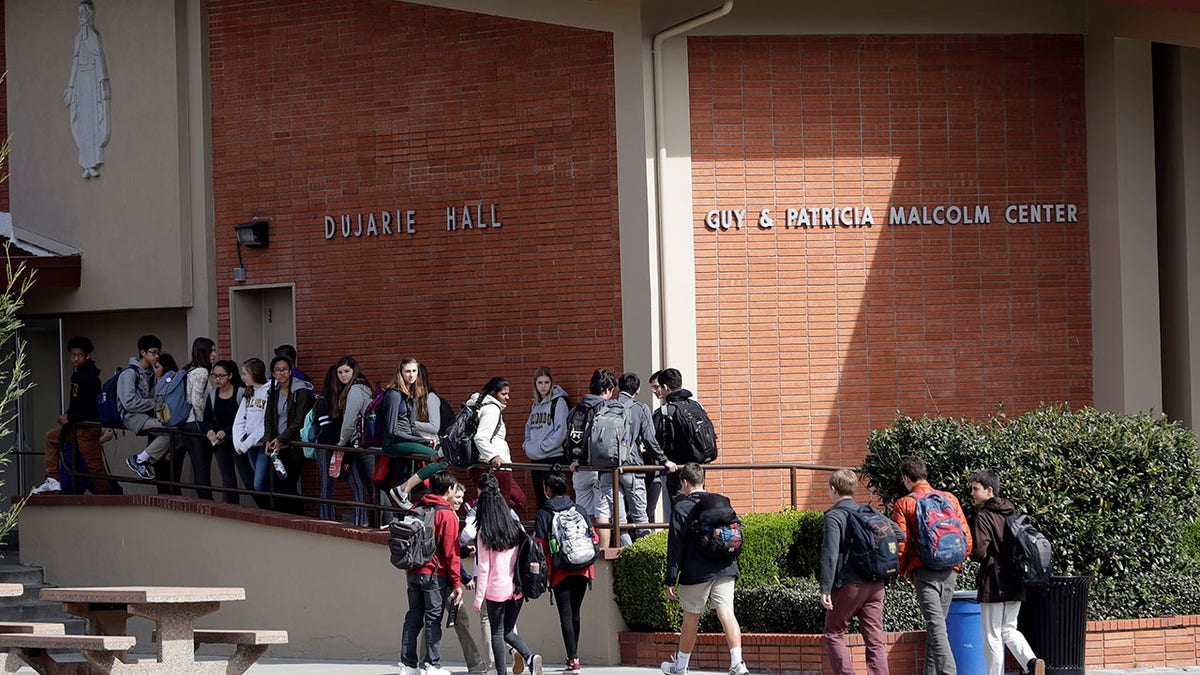Former school resource officer on Uvalde, Texas shooting: 'Perimeter security is critically important'
Mo Canady, executive director of the National Association of School Resource Officers, dissects law enforcement response to the Robb Elementary shooting on 'America Reports.'
Some city officials voted to remove school resource officers (SROs) following the "defund" police movement in 2020, which police chiefs and other experts argue could lead to more violence in schools.
The shooting at Robb Elementary School in Uvalde, Texas, that left 19 students and two teachers dead has prompted an ongoing debate over whether officers should be in schools at all.
Political pundits and commentators condemned the police response to the May 24 shooting. Uvalde School Police Chief Pete Arredondo has since faced calls for his termination over his response to the incident after it took more than an hour to take down shooter Salvador Ramos once he barricaded himself inside a fourth-grade classroom due to a missing key.
Ultimately, three officers with the Uvalde Police Department were injured while responding to the shooter.

Political pundits and commentators have condemned the police response to the May 24 shooting at Robb Elementary School in Uvalde, Texas. (Marco Bello)
The argument against SROs
Students, city council members and activists who have protested or voted in favor of pushing SROs out of schools saying they target minority students more often than white students — a point backed by data from the Department of Education's Office of Civil Rights.
NC BLACK STUDENT GROUP POINTS TO UVALDE MASSACRE IN ADVOCATING AGAINST SCHOOL RESOURCE OFFICERS
Some also suggest that there is a "school-to-prison pipeline" in which students confronted by SROs are more likely to face consequences in the real-world criminal justice system or get expelled from school and, as a result, become involved in gang activity outside of school.
ACLU Florida conducted a study on an increase in SROs in Florida schools following the 2018 Marjory Stoneman Douglas High School shooting that left 17 dead. Researchers found that student arrests occurred more frequently; schools hired more officers than nursers and counselors for the first time ever; the number of students expelled increased; and schools reported more use of physical restraints on students.

ACLU Florida conducted a study on an increase in SROs in Florida schools following the 2018 Marjory Stoneman Douglas High School shooting that left 17 dead. (Joel Auerbach)
Those in favor of replacing or ousting SROs argue that these trends ultimately make students feel less safe in schools, which are places meant to make children feel secure when other areas of society do not offer that same comfort.
The ACLU noted in a 2021 press release that while there were only about 200 SROs in 1970, there are more than 40,000 now in schools across the U.S.
The argument for SROs
Michael Verden, CEO of The Lake Forest Group — a former police officer, Secret Service agent and director of security for the NBA — told Fox News Digital that with the increase in SROs at schools comes increased experience, as well. Whereas a few years ago departments may have considered SROs low-level positions, they are now putting "their best and brightest" in schools.
NATIONWIDE DEBATE SPARKS CALLS TO REMOVE POLICE OFFICERS FROM SCHOOLS
"If you're a school resource officer … your school is going to start with being in a position to monitor access into the building at the start of the school day. Once the school day starts, your responsibility is to monitor access throughout the school day because you're going to have [visitors]. You're going to have contractors and service providers coming to the school. And ideally, once the school day starts, you limit access into that school to one entrance so you can monitor everybody coming and going at the school," Verden explained.
Their primary role, he said, is to "monitor access into the school, and if they do that, they've enhanced the safety and security of that school 100%."
While SROs are typically trained to stop school threats, they are also trained to stop other crimes, such as fights between students and theft incidents. Getting rid of SROs could lead to more violence if students believe they will not be held accountable, experts say.

The primary role of school resource officers is to monitor access in and out of school entrances and identify potential threats. (Marcio Jose Sanchez)
"You have fights, you have weapons being brought to school, you have drugs," Verden said. "You have all kinds of criminal activity at school. You put a bunch of people together in a close environment, things happen. It's just the way the world works. … You can't ignore what's happened at these schools and there's really no excuse not to have a school resource officer at every school."
Ken Gray, a senior lecturer at the University of New Haven's Criminal Justice Department and retired FBI agent specializing in counterterrorism, similarly said SROs "have become an essential part of the overall security structure of schools."
TEXAS SHOOTING: RETIRED NYPD LIEUTENANT CALLS FOR SCHOOL RESOURCE OFFICERS TO BE ARMED
While they play an important role in the physical safety of schools, he added, "resource officers are also part of the threat analysis."
"That is the threat is people, not things. And so the resource officer will learn about kids that are potential threats inside the school and potentially interdict if the threat is coming from inside the school. And the resource officer can be another barrier if the threat is coming from outside the school."
An example in Maryland
Police chiefs representing major metropolitan areas, too, believe SROs — who are often sent to schools form their local departments — are necessary to keep students safe as mass shootings, violent crime and juvenile crime are on the rise compared to recent years.
Police chiefs from Montgomery County, Maryland; Washington, D.C.; Seattle; Chicago; San Francisco and Oakland, California, discussed the issue of school districts voting to oust SROs during the annual Police Executive Research Forum (PERF)/ Major Cities Chiefs Association (MCCA) Annual Conference in San Francisco earlier this month.

Montgomery County banned school resource officers for a year following 2020 protests. (Katherine Frey/The Washington Post)
Montgomery County Police Chief Marcus Jones first explained the issue in his county, which borders D.C. and has been grappling with juvenile violence since the pandemic.
After hearing from students and activists in 2020, the Montgomery County school district banned SROs from being on its 25 high school campuses, and from responding to school incidents during the 2021-2022 school year.
CRIME SPIKE FORCES SCHOOLS TO REINSTATE SCHOOL RESOURCE OFFICERS AS DEFUND MOVEMENT COLLAPSES
Jones said the change demoralized officers who had been embedded into schools and had positive relationships with students. All 25 of the county's high school principals singed a letter expressing opposition to the decision.
In late April, however, the Montgomery County school district reinstated SROs — now called community engagement officers (CEOs) — after one high school student shot and wounded another with a ghost gun in a school bathroom in January, Jones explained during the conference.
The school district and the Montgomery County Police Department reached a Memorandum of Understanding (MOU) on April 26 to reinstate officers on the condition that officers change their titles and modify what kinds of incidents they respond to. For example, instead of citing students in possession of marijuana, SROs can now only confiscate it. During the 2019-2020 school year, Jones said, there were 27 arrests at 25 high schools, the majority of which were for marijuana possession.
Racial Justice Now! (RUN!), one of the nonprofit activist organizations campaigning to get officers out of schools, responded to the county's decision to reinstate SROs in a May 25 statement claiming that "there is no research or evidence that indicates police officers in schools make communities safer."
CALIFORNIA STUDENTS PUSH BACK AGAINST BAN ON CAMPUS TRESPASSING THAT'S ROOTED IN ‘WHITE SUPREMACY’
"They voted to reinstate officers in our schools despite overwhelming evidence that police DO NOT make schools safer and despite a large outpouring of opposition from a diverse group of students — particularly Black students who are impacted the most from having police in public schools…" the statement reads, adding that there is "overwhelming" evidence that police "disproportionately abuse, target, and kill Black people without accountability, consequence, or justice."
Other cities that ousted SROs
D.C. Police Chief Robert Contee similarly said there is an ongoing debate in the nation's capitol over whether SROs should be in schools, with teachers and principals in favor of school officers and the D.C. City Council voting to remove them entirely from schools over three years.
Seattle Police Chief Adrian Diaz said his department found out that the school district would be suspending SROs for a year only after seeing a 2020 tweet about the issue.
Oakland Police Chief LeRonne Armstrong said the county's decision to remove 20 SROs from public school campuses following the killing of George Floyd resulted in five homicides that began as school conflicts. Even after the police department agreed to not have SROs make any arrests in schools or do on-campus searches, the district decided those terms were not enough to reinstate officers, according to Armstrong.

An officer at Columbine High School in 2019. (Chet Strange for The Washington Post )
Staffing complications
On the other side of the coin, in more moderate cities like Charleston and Virginia Beach, police chiefs said that even though there is a general consensus among community members and politicians alike to have officers in every school, their departments are unable to accomplish that goal due to nationwide police staffing shortages.
Staffing shortages coupled with rising violent crime in some cities has led some department leaders to opt to put officers in downtown areas over schools because the immediate threat of violence is more prominent in those areas.
"It's hard now to find men and women who want to be police officers," Verden said.
CLICK HERE TO GET THE FOX NEWS APP
In general, police chiefs and security experts agreed that schools are safer with SROs, that it is possible to make student-friendly significant changes to SRO programs while keeping officers in schools, and that the decision to remove them from schools is a political one that does not often have the full backing of teachers, principals and parents in a school district.
"I think that the school resource officer would be one more barrier against violence occurring in the school, that the absence of that school resource officer makes them more at risk for potential violence," Gray said.
Editor's note: This article has been updated to remove a portion of a quote inaccurately stating that most SROs are not armed.


